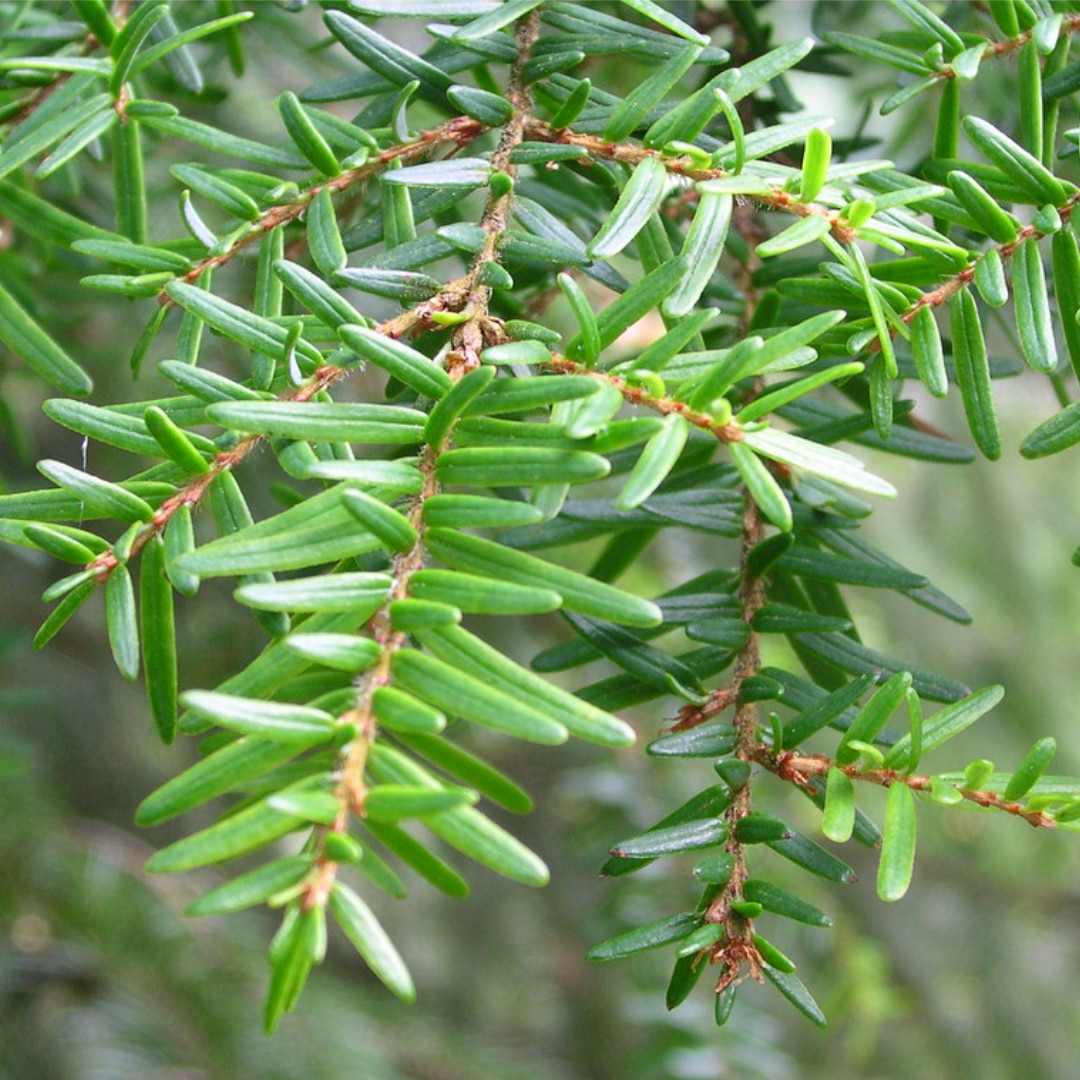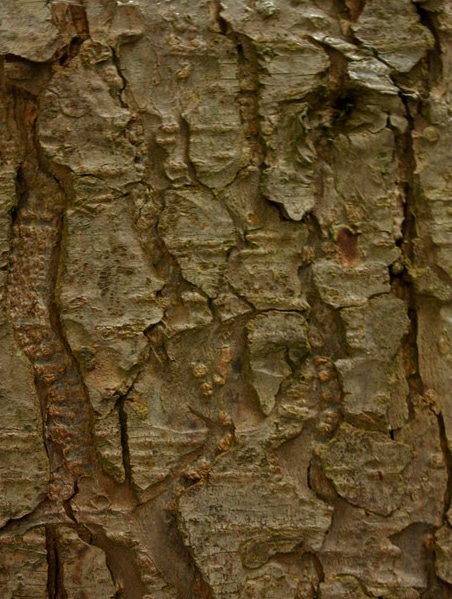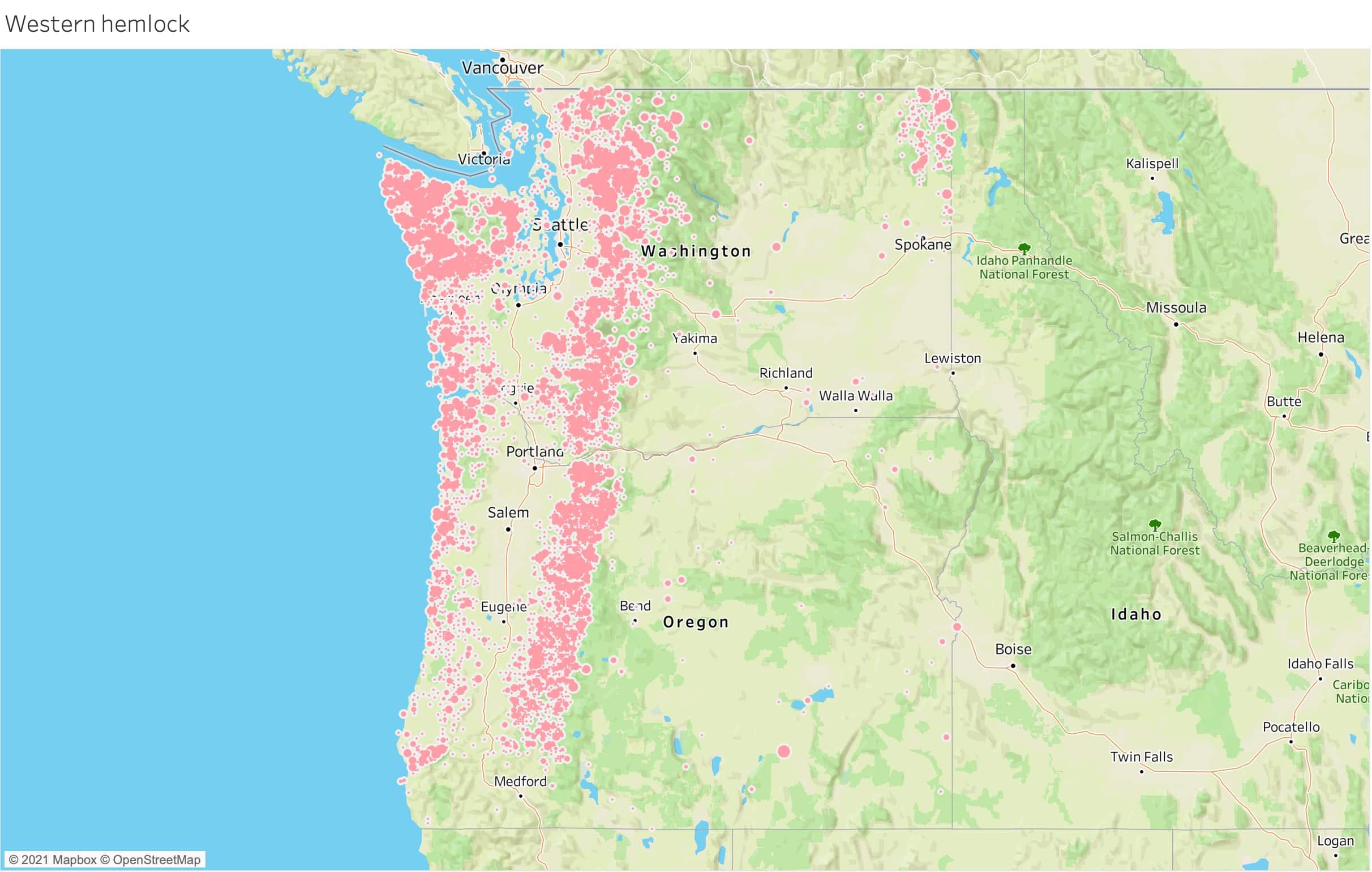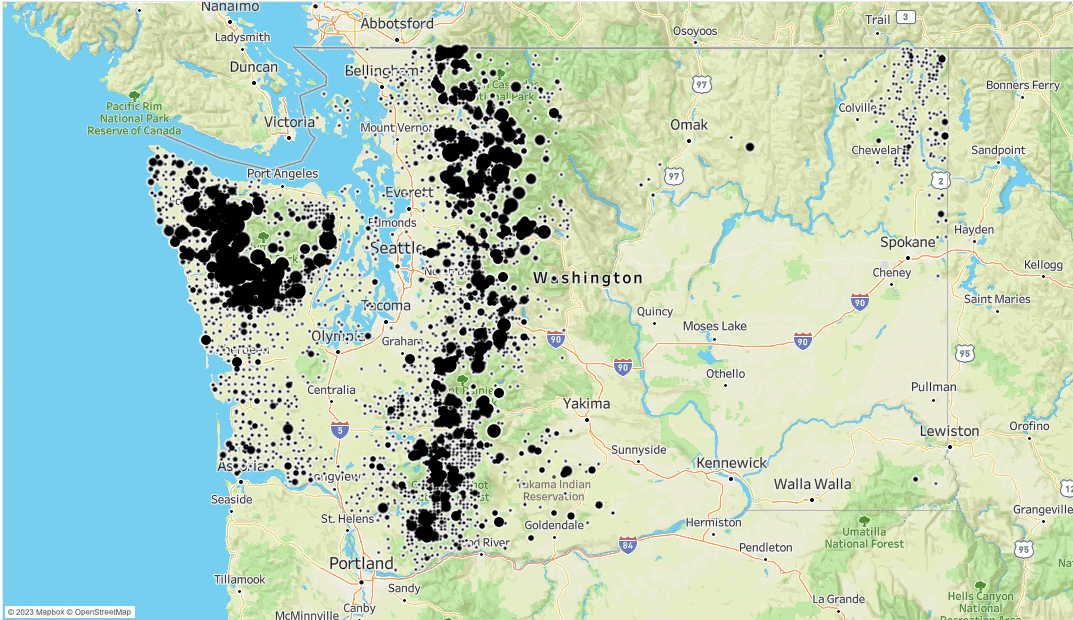Western Hemlock Tsuga heterophylla
Western hemlock is one of the most abundant trees in western Washington, Oregon, and British Columbia. A key identifying characteristic is the small cones that will be found scattered across the forest floor. In Latin, the name Tsuga heterophylla means to have different size leaves; one of its other notable characteristics. Another way to be able to identify this tree is by its drooping branches.
As they age, western hemlocks will lose their lower branches in a self-pruning manner.
Western-Hemlock-no-map.jpg
- Less than 1 inch in length
- Green to red-purple when young
- Turn brown when mature
“File:Tsuga heterophylla kz03.jpg” by Krzysztof Ziarnek, Kenraiz is marked with CC BY-SA 4.0.

- Yellow-green when young
- Light brown when mature
- 0.6 to 1 inch in length
- Appear between leaf and stem
“Western Hemlock (Tsuga heterophylla)” by GlacierNPS is marked with CC PDM 1.0.

- Different lengths
- Spirally angled
- Flat
- Soft and feathery
- Glossy
- Yellow to dark green on top and white underneath
“Iron Horse Trail” by brewbooks is marked with CC BY-SA 2.0.

- Grey-brown
- Scale-y
- Somewhat thin
- Moderately furrowed
“Hemlock, Redcedar, Douglas Fir” by La.Catholique is marked with CC BY 2.0.
state representative George Adams, who proclaimed the tree would become “the backbone of this state’s
Western Hemlock Distribution in Washington and Oregon
Western Hemlock (Tsuga heterophylla), a predominant tree species in the Pacific Northwest, thrives in moist, cool climates, typical of this region. Preferring lower mountain slopes and coastal areas, these trees are often found in shaded, well-drained soils. Their ideal habitat includes areas with high rainfall and cool temperatures, which contribute to the dense, lush understories characteristic of these forests. Western Hemlocks are shade-tolerant and can often be found in mixed coniferous forests, coexisting with species like Douglas Fir and Sitka Spruce. Their ability to grow in varied conditions, from sea level to mountainous terrains, reflects their adaptability within this diverse ecosystem.
Distribution of Western Hemlock in Washington and Oregon

Distribution of Western Hemlock in Washington state

